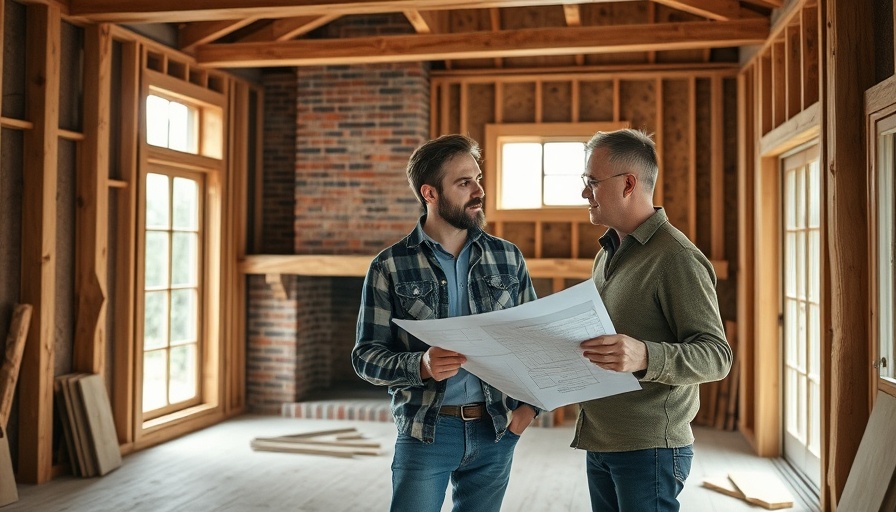
Unveiling the Beauty of Wood Cabinetry in Modern Kitchens
In the quest for the perfect home, the kitchen stands out as a focal point—a space where functionality meets style. Recent trends spotlight wood cabinetry as a key element in creating warm and inviting kitchens. In this article, we explore nine stunning examples of new kitchens featuring beautiful wood cabinetry, showcasing how this timeless material can elevate both the aesthetic and practical aspects of kitchen design.
Timeless Appeal: Why Wood Cabinetry Remains Popular
Wood cabinetry brings a natural warmth to kitchens, making them feel more inviting compared to colder materials like metal or plastic. The rich textures and patterns of wood can transform a plain space into something extraordinary. The versatility of wood is also notable; it can fit seamlessly into a variety of design styles, from traditional to contemporary.
Moreover, wood cabinetry can be customized with stains and finishes to suit any homeowner's preference. This adaptability is particularly valued among California homeowners, known for their unique tastes and the beautiful landscapes that inspire them. The harmony formed between kitchen design and nature is sought after in many new constructions.
Highlighting California's Influential Trends in Kitchen Design
California homes often set the trends for modern living, and the use of wood cabinetry is no exception. Influenced by the state's diverse environments, ranging from coastal to mountainous areas, California kitchens are geared toward bringing outdoor elements inside. This trend is captured in homes that utilize materials like reclaimed wood, providing both sustainability and a story behind the design.
Additionally, collaborations with local artisans and designers have infused California kitchens with a one-of-a-kind character that mass-produced items cannot replicate. This also introduces sustainable practices as more homeowners seek to make eco-friendly choices in their kitchen renovations.
Showcasing Stunning Kitchen Designs with Wood Cabinetry
Here are five notable kitchens featuring beautiful wood cabinetry that exemplify modern aesthetics and functionality:
- Rustic Charm: A kitchen combining reclaimed wood shelving and cabinetry, creating a warm and rustic space that feels like a retreat.
- Modern Minimalism: Sleek, dark wood cabinets partnered with marble countertops and metallic accents for a contemporary feel.
- Bright and Airy: Light wood cabinetry paired with airy open shelving that invites sunlight and warmth into the space.
- Farmhouse Delight: Classic white walls and vibrant wood cabinetry that deliver a cozy farmhouse vibe, perfect for family gatherings.
- Industrial Edge: Combining wood finishes with metal elements to craft a uniquely industrial yet chic kitchen.
Practical Tips for Incorporating Wood Cabinetry
While the aesthetic appeal of wood cabinetry is clear, integrating it into your kitchen design requires consideration:
- Choose the Right Wood Type: Different woods have unique characteristics, from oak's durability to the elegance of cherry or walnut. Select a type that complements your overall design.
- Consider the Finish: A stain can enhance the natural beauty of wood while providing protection. Decide on a finish that fits your lifestyle—matte for a modern look or glossy for a more traditional finish.
- Maintenance Matters: Wood may require more upkeep than synthetic materials. Regularly clean and apply sealants to preserve its beauty and lifespan.
Counterarguments: The Drawbacks of Wood Cabinetry
Despite its many advantages, wood cabinetry also has downsides that homeowners must consider. One significant concern is the susceptibility to moisture and humidity, which can lead to warping or swelling. This is particularly relevant in coastal regions like California, where the climate is variable.
Additionally, wood cabinetry can come with a higher price tag compared to other materials, making initial investment a critical factor for many homeowners. However, the longevity and timeless appeal may justify the costs as they increase the home's overall value.
Future Predictions: The Evolution of Kitchen Design
The future of kitchen design will likely see an increase in sustainable wood options, with a focus on eco-friendly practices and materials sourcing. Innovations in technology will also influence cabinetry features—think integrated smart-home systems that enhance convenience and efficiency.
As trends shift toward open floor plans and multifunctional spaces, wood cabinetry will continue to play a central role. It will likely evolve into more innovative forms, merging aesthetics with smart functionality.
Conclusion: Your Kitchen, Your Style
Choosing wood cabinetry for your kitchen remodel offers a wealth of possibilities, balancing beauty with practicality. As you embark on this journey, think about the legacy you want your kitchen to convey while blending contemporary needs with timeless materials. Create a kitchen that feels like home, filled with character and warmth, and reflects your unique style.
Embrace the beauty of wood cabinetry and let it inspire your space. Whether undergoing a complete overhaul or simply updating your current kitchen, the choices you make will significantly impact your home and lifestyle.
 Add Row
Add Row  Add
Add 




Write A Comment